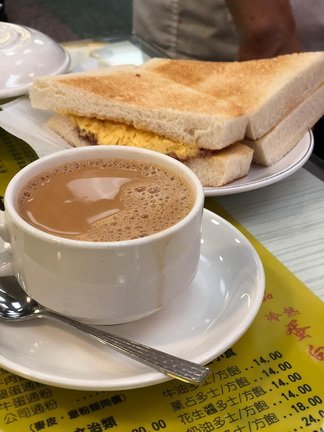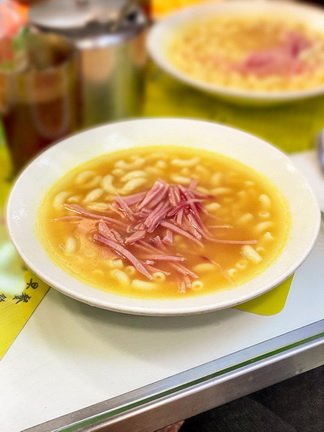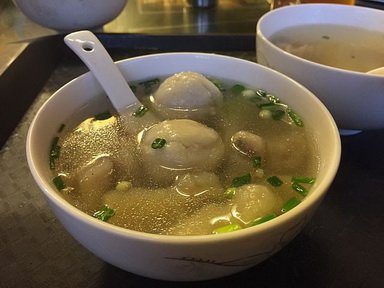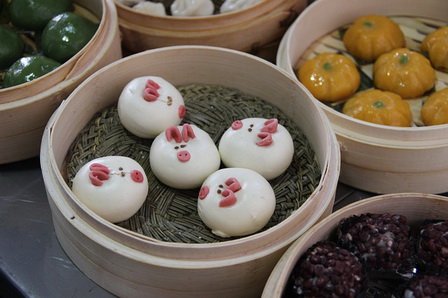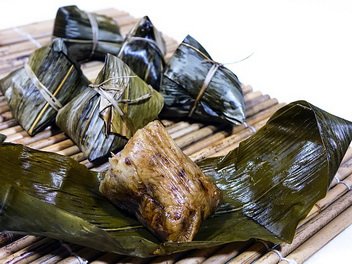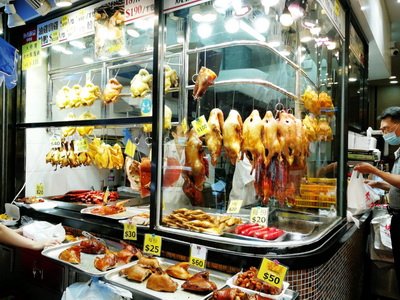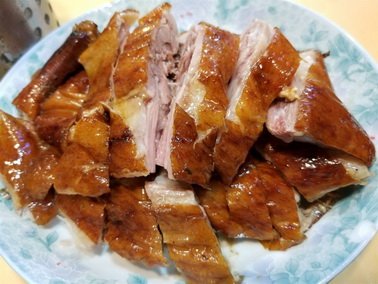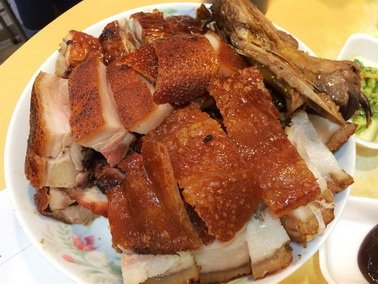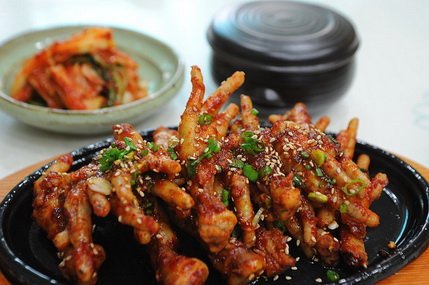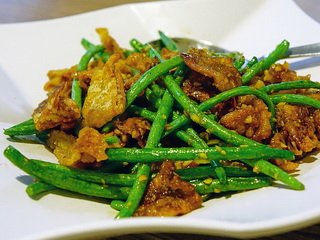To eat or not to eat… good question
What food should you try in Hong Kong P.1
To eat or not to eat… what’s the answer?
What for breakfast? Congee – Egg toast with milk tea – Soup with salted meat/gonzagi noodles – Wonton soup – Fishball soup – Brisket noodles/beef noodles – Snake and shark fin soups – Dim sum – Lo mai gai – Roasted meat – Phoenix talons – Braised greens
H
ong Kong is a good way to get to know Asia, without the cultural shock. Its history is written by travelers and foreign influences from all over the world. People from the East, the white ghosts (they were described like that at first, because of the difference in the shade of the skin), can feel at home in here. In the meantime, they can easily get to know the Chinese culture.
Hong Kong’s cuisine is the image of a multicultural nation. But still – you can find here a lot of typical, Cantonese places. Small bistros – the teahouses, serve breakfast and lunch and are full at those times. Usually, there is not much time to eat something bigger. What’s more heavy eating, rice, and the local climate make you sleepy immediately. Small dishes – dim sum, bakeries, and street stalls are perfect to grab a quick bite and go back to work.
Life starts after sundown. The evening is a time to spend with family. To go to a restaurant with friends. It is a table filled with rice, noodles, roasted meat, braised vegetables, and people. It is the time when the work has ended and you can relax and be in a group.
Try a piece of this world through the food.
In this article, we will present you with the most typical and popular, Cantonese dishes. Before you go to conquest the international cuisine, try at least some of them.
What for breakfast?
Congee
Whether in China or Hong Kong you are bound to notice people eating or even drinking congee.
The preparation is quite simple – you boil rice in a lot of water. You can then mix it with something. It is often also boiled with some meat or egg or herbs. The dish is very forgiving – you can never do it wrong. And it is common to drink it, instead of warm water, with different dishes of the day.
In Hong Kong, they serve 粥 – jūk (Cantonese) or zhōu (Mandarin – because of the regional differences, the spelling can vary). Jook/juk is another name for the dish. You can describe it as a rice porridge (only to make it more understandable for foreigners).
The story says that congee was first mentioned in some papers from the Zhou Dynasty (1000 BC). It is certain that this was and is cheap and satisfying food. For centuries it was the only sustenance during difficult times. We probably hear of it when we have allergies or other digestive problems – we go back to the simplicity of grains boiled in water.
The common additions you can top your congee with are zhacai (鹹鴨蛋 – salted duck egg), lettuce, bamboo shoots, meat or fish (rousing – meat floss), you tiao (deep-fried dough to dip in), herbs, or beans. A curious thing that can allow you to taste both can be a 100-year old egg (皮蛋). Yes – the stinky one.
Egg toast with Milk tea and…
As every country love egg, you are bound to find them in Hong Kong as well. The simplest way they do it is to make a sandwich from a white flour toast and put a ton of eggs inside.
The toast is plain or grilled, with or without skin – always soft and inviting. The egg comes alone often scrambled. The upgraded versions tend to have some additions inside – like minced beef.
It is often enjoyed with a glass of Chinese milk tea. How it is different? You can only describe it as having more milk than the English version. The milk is often condensed which makes the whole experience even sweeter.
When on the subject of toast it is important to say about the love of Honk Kongers to the French toasts… They do it differently here though. They use two slices of bread trapping savory things in between the sheets, they dip the sandwich in egg solution and fry it until golden. It is something so simple but at the same time so tasteful… It is not a surprise that Hong Kong is said to consume even more toasted bread than the USA.
Soup with salted meat/macaroni/egg/gonzagi noodles
Soup or rather hot broth is a very Chinese thing to eat (any time of the day). After being in contact with foreigners for so many years Hong Kong developed quite a variety of those. It may be a soup with macaroni, so well known in Italy or a variety of rice noodles, or even ramen. The chicken broth with this addition may be plain but here come the toppings.
Ham or luncheon is a well welcomed salted addition. A simple hard-boiled egg is very canton-like. There can be some vegetables swimming in it and there is, of course, pepper and salt that can spice it for you.
Don’t let yourself be taken by surprise by gonzagi noodles or rather gong zai mian. It was already mentioned, and it is simply instant noodles. Hong Kong was introduced to them quite late (second half of the XX century). The first product was called “doll” but had a cute drawing of a boy called “gong zai”. Voila! Secret unfolded! The gonzagi noodles tend to have more flavoury broth, fried egg, and sausage to give you all the proteins and carbs you will need for the rest of your day.
Wonton soup/ wonton noodles
The dish is said to first appear in the VII century in the Delta of Guangzhou, not far from Hong Kong. It was a creation that brought together the tender wontons – dumplings with shrimp pork filling; hot broth, and noodles. With time and evolution the dry version was created, where you have a plate of noodles and a bowl of soup with wontons.
This is one of the most common dishes in Hong Kong and it is said that it speaks volumes about the chef.
Why? Everything needs to be pre-prepared in advance and joined together at the last moment. The original dumplings should be a mixture of shrimp and pork meat with over 70% of the first. The noodles should be made from rice, although today you have other variations. The broth is made from fish, but here as well – much has changed over the years. It should be fresh, and cannot be older than a few hours.
The noodles are boiled for 10 seconds after which they are washed with cold water and put into the bowl on top of a spoon. The third layer is wontons – boiled, but not too much, not too tender. Hot pot is poured over it, the soup is garnished with leafy vegetables and spring onions and this is what is served. Preferably with chopsticks and the spoon which is already in the bow.
Traditions are numerous, variations even more with meat dumplings and broth. You will be surprised by the novelty of something so simple and the jiaozi (dumplings)… doesn’t come fresher than in a true Chinese restaurant.
Fishball soup
Another local soup, which is really all about the hot broth with something in it. In this variation, you get the soup, noodles, green leaves, and… local specialty which called “fish balls”.
They are everything you hear, but the preparation gives them a very smooth texture. The fish meat is not chopped but almost pulverized by the long pounding. It is definitely a one-of-a-kind thing and you should really try it since there is a lot of different flavors of the “balls” in Hong Kong. The meat is mixed with starch, salt, and egg and the effect is a dough that feels like a cream (but thicker).
It is easy to make them at home and everything else depends on what you want to eat with it. In this case – the hot broth. The locals buy their choice of balls in the wet markets. It is always one of the most visited and visually attractive places.
Brisket noodles or beef noodles
Chinese people do love their noodles. According to the archeologists, they were served 4000 years ago, and they have proof! This would mean that pasta comes from Asia, but do not tell this to the Italians just yet.
The broth is equally famous here. It can serve as a medicinal drink or a soup, or both. The recipe for the savory liquid is the best-kept secret of every restaurant and adding meat is only the start of it.
Brisket noodles are yet another soup with noodles and the addition of beef. But you get a wide variety of noodles – thin to wide, rice and egg noodles. You get a broth where the meat probably boiled for ages because it is so impossibly tender! Garnish it with something green and you have another unforgettable dish it will be difficult to live without.
Brisket noodles may come in a “dry” version – they may be better for those wanting fried noodles with meat instead of soup. Also, try the curry brisket noodles if you have a chance – multicultural Hong Kong has many variations of the most popular dishes.
Snake/shark soup
These are soups that may take the longest to try… or not!
Snake soup (in the photo) is very popular in the winter months and is made from different types of snake meat. It is quite thick, full of flavor and health since it is made on pork bones as well.
It is loved ever since before the age of Christ and is considered a medical broth. Snake meat has a lot of good properties and is accompanied by lemongrass, ginger, and some mushrooms which have good qualities as well. The snake is considered to bring warmth to the body to balance the cold of the winter (it is part of the yang and yin ingredients philosophy). Making this soup is not as difficult as the process of preparation before it. Be sure to try it while you can since there is less and less specialist in this craft.
As for the taste – the snake does taste like chicken, maybe a bit harder to chew on. So, do not worry.
Shark soup is another delicacy soon to be replaced by its “fake” form. The practice of fishing sharks just for their fins has become troublesome around 2013. The fins fetched a higher price than anything else, so the meat was thrown back into the ocean.
This is because shark fin soup and its ingredients are a symbol of wealth in this culture. Custom comes from times far, far away but the link between wealth and serving this food is still alive. Now it is most common to serve it during weddings, but the custom dies as well.
Because of the shark situation a “fake shark fin soup” was created. The meat is replaced by mushrooms and other vegetables creating a tasty thick blend. You cannot really make that much of a difference – especially if you add noodles.
Dim sum
In the early days of the Canton region, people used to come into the teahouses for their yum cha, which means tea. They were served with some snacks to accompany the drink and it somehow happened that it was a perfect amount for breakfast.
With time yum cha evolved becoming something more of a brunch break. Small snacks also changed turning into bite-size dumplings, rolls, and stuffed buns. But one thing stayed the same – the unending amount of tea on the table. We call it dim sum but in Hong Kong people still say “let’s go for yum cha” out of habit, or in honor of the tradition.
It was and is a group event, although more and more people do it in pairs. When you order your dishes, they come in small numbers and a bite-size (2-6 depending on the type of dim sum), but the truth is you are not able to try everything. So, if you really want to do so – do it in a group!
Usually, you will be placing your order on a piece of paper with a list of dishes. The menu should be bilingual, but it may happen it will all be in Chinese (thankfully there is often a picture menu that goes with it, so do not panic right away). You just input how much you want to order right next to the one you like and give the paper to the waiter. The tea is filled, dim sum arrive and what comes next is another tradition.
You are supposed to wash the cutlery (well – chopsticks and spoon) in the tea. This is what the additional bowl is for.
What there is to choose from? Shrimp dumplings are always good. Don’t forget about siu mai in a yellow wrapper of a cake – they come with pork, fish or shrimp. Spring rolls are always a good choice – they come stuffed with meat or vegetables. Steam buns may be a surprise – they do come in a size of a bun so watch out. They are also normally stuffed with barbecued pork, which is sweet in taste. Don’t forget about rice in a lotus wrap – it is a version of Lo mai gai, but mini. Steamed meatballs, turnip cakes, and desserts (anything made of mango would be a wise choice) are also accessible and treated as part of a dim sum experience.
Dim sum can be bought in a restaurant or out of a stall that you pass on the street. Be frivolous with them and enjoy every bite!
Lo mai gai (糯米雞)
This requires an explanation of its own since rice in lotus wrapping has a longstanding tradition in China and in Hong Kong. It was a sort of comfort food/stuff-your-belly-full food/and a celebration food so there is a lot of feelings when it comes to it. Dragon Boat Festival is the common time to get local zhongzi (粽 – the name for the triangle-shaped ones) stuffed with savory things.
It can be described as a rice ball mixed with other ingredients, which is shaped into some formed and enclosed in a leaf. There are many versions of this dish but in Hong Kong, they are within a lotus leaf, and they contain about 4-ish bites… difficult to say. The truth is, that it was first served as breakfast food and one pocket was sufficient to last you for a while. When you order it in a dim sum place, there are usually two that arrive – but in the company of other treats eating even one Lo mai can be a challenge.
Do not be surprised if you hear the name of zongzi. It is the same thing, mostly. The difference is that lo mai gai is a small rectangular pocket containing only a few bites. Zongzi is the festival pyramid – full of many savory things suitable for the occasion (on the photo it is on a standard, small plate).
It doesn’t seem much but the glutinous rice with other treats inside is very, very filling. What can be inside? Ingredients are multiple… you can find chicken, ham, pork, or dried shrimps. Also, vegetables and mushrooms in them are a must. But some of the interesting ingredients are nuts and lotus seeds, salted egg, jujube plum, chestnuts, and bean paste.
For a foreigner, it is a wonderful experience and food that cannot be eaten elsewhere!
Roasted meat and char siu
Who can live without roasted meat… With the respect to non-animal eaters – there is only one answer to this question. Thankfully in Hong Kong, the demand is well supplied. You have different kinds of meats and different ways of preparation. All packed nicely in the specialty shops you can see everywhere. Even the big supermarkets have a part dedicated to these delicacies.
They make whole dishes out of it. But then… no surprise there. Rice or noodles with some vegetables and these roasted snacks is always a good idea. Many homes in Hong Kong come in a tiny size, or without an oven. Getting something pre-prepared and putting ingredients together at home is a common practice.
To make it plain simple you have:
Roasted goose siu ngoh (燒鵝)
This is a delicacy marinated with red wine, soy, and oyster sauce. The piece hanging at the window next to the street usually has this characteristic reddish skin. Under it – there is juiciness, crispiness, and all the flavors you were imagining.
Roasted duck siu ngaap (燒鴨)
This is more of a Beijing treat, which can be found in Hong Kong, although at quite a demanding price. But the crispy skin and tasty meat are totally worth it! (especially if you will not be visiting Beijing in your future).
Roasted pigeon
Like a duck, but so different… The pigeon also has this dark kind of meat, but the flavors seem to be stronger. It is often braised in soy sauce, so you can get two versions. It comes with something green and rice.
Barbecued pork char siu (叉燒)
Char siu is yet another family of roasted dishes, which are marinated in a special sauce beforehand. The fillet is to die for and buying it just to bite on it on a hiking trail is not a surprise. It is both salt and sweet and can be paired with anything you want (on the photo – with rice).
Crispy roasted pork belly siu yuk (燒肉)
It is surely worth trying, although watch out for your gums. The skin is so crispy… but then you are in Hong Kong and it is not a surprise.
Under the skin, you will find a layer of fat and juicy meat (see the adjacent photo). Taste all of it together to get the perfect balance of flavors. Add rice and you will have a full meal.
Crispy chicken and others
Let us not forget about the ever-popular roasted chicken. It is less spiced than a goose and it can be quite oily – but this is why it is also so crispy. It may be a less intriguing feeling like the most everyday food of everyone. But when it is sprinkled with roasted garlic it is called the wind sand chicken which may spark your interest. One thing about this bird is sure in this country – they do not like chicken breast – they feel they are too dry. And it is very difficult to find a simple chicken in lemon and herbs. Somehow it is always spiced with something Asiatic… we wonder why 😊
What is not roasted but can also be found there is si yao gai (豉油鸡) – soy sauce chicken which is mostly slow-braised. It is a very juicy dish.
The meat eateries are quite recognizable and popular among the locals. What is better than some bites of meat that you can have to a glass of beer? For the brave ones – try intestines variety (hearts, kidneys, stomach, and others). It is said to be the food of the poor in the old days, reaching the pikes of interest a few years back… not that common among the young generation, but still there and maybe coming back.
Phoenix talons
Sichuan recipe link
What sounds like a dish made of a legendary bird is the most overlooked meat outside of Asia. Chicken feet are eaten all over the world, but it is a food of elderly people or only an ingredient that is meant to give some taste and then is discarded.
China loves chicken feet! They mostly think of them as a snack, not really talking about their healthy role. The preparation varies. A popular way is to fry them to give them crispiness and then steam in sauces and other ingredients to give them tastes. The effect comes in the form of tender skin, meat, and tendons. This way of preparation makes them ideal for a dim sum restaurant. They usually come in a black bean sauce or abalone sauce.
You may like the spicy snack form more if you are not a fan, but still want to try. The Sichuan way of preparation is quite complex involving deep frying, steaming, and braising. But it all goes well with the spices and is an intriguing way to try it in this form.
Braised greens
Gai lan recipe link
Eggplant recipe link
4 beans recipe link
Hong Kong has a wide variety to try, but there are some dishes that are quite popular among the locals.
Firstly, the leafy greens, mostly gai lan, and choy sum, accompany many soups. They are either served inside the broth or as a side dish. They are served slightly braised and in a mixture of soy and oyster sauce with ginger and/or garlic. The crispy, healthy addition is always welcomed.
Eggplant is another local favorite. We honestly thought that only the Italians can make it good until we came to Asia. What a wonderful vegetable! Cantonese people like to fry or deep-fry it and coat it in an oyster and black bean sauce. Like many dishes in this article, it has this salty-sweet flavor that beautifully accompanies the delicious, creamy aubergine. There can be some garlic sauces for this, but it doesn’t really matter. It is the way they prepare it in this country that makes it sooo good.
You can try it in another local, although more mainland-China, dish. It is called “dry-fried four beans” (干煸四季豆) – it is Sichuan kitchen so make sure you like it spicy (or when you are asked spicy or not, just say no). The classic version is with minced meat but the vegetarian one is with eggplant.
Not that much green but still worth trying while in Hong Kong – another Sichuan delicacy – fried, shredded, spicy, and sour potatoes which are nothing you would ever think of. When you get them, you think it is some kind of a spicy Asian vegetable. It is crispy, full of flavors, and simply wonderful. Not at all what the westerners think. They are a side dish, so they will always fit to whatever else you order.


